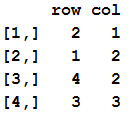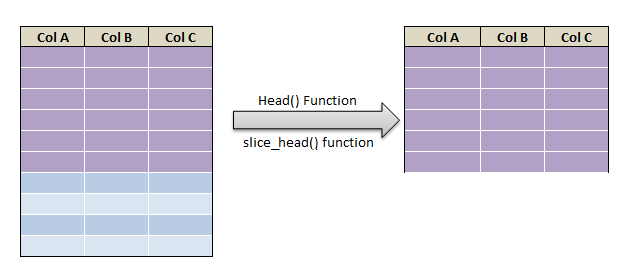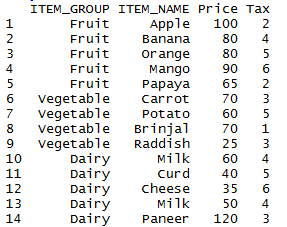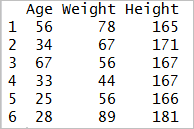Which function in R, returns the indices of the logical object when it is TRUE. In other words, which() function in R returns the position or index of value when it satisfies the specified condition. which() function gives you the position of elements of a logical vector that are TRUE. It can be a row number or column number or position in a vector.
Lets see an example for each
- Which function for vector
- Extracting row index and column index using which function in dataframe
- Which function for matrix to extract the position of a value
Syntax of which function in R:
- x – logical vector
- ind- logical; should array indices be returned when xis an array?
Example of Which function in R:
# which function in R which(letters=="z") which(letters=="s")
Returns the position of “Z” and “S” in the letters object.so the output will be
[1] 26
[1] 19
Which function for Vector:
# which function in R for vector x = c(1,3,5,7,8) which(x==3) which(x>=7)
Returns the index position of x=3 and X>=7 in the vector and .so the output will be
[1] 2
[1] 4 5
Which function in R for data frame:
Let’s create the dataframe to depict an example of which function.
df = data.frame (NAME =c ('Alisa','Bobby','jodha','jack','raghu','Cathrine', 'Alisa','Bobby','kumar','Alisa','jack','Cathrine'), Age = c (26,24,26,22,23,24,26,24,22,26,22,25), Score =c(85,63,55,74,31,77,85,63,42,85,74,78))
df
so the resultant dataframe will be
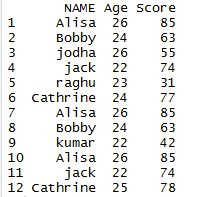
Now lets see how to use which() function for data frame
# which function in R for a data frame which(df$Age==22,arr.ind = FALSE) which(df$Score==85,arr.ind = FALSE)
output:
[1] 4 9 11
[1] 1 7 10
Get Column position using which() function in R
which function to get the column position is shown below
# which function in R to get column position which(names(df)== 'Score')
so the column position of the “Score” column by using which function will be
output:
[1] 3
Get the name of the numeric column using Which function
# which function in R to get numeric column names check = which(sapply(df, is.numeric)) colnames(df)[check]
Step 1 : sapply(df, is.numeric) returns FALSE TRUE TRUE FALSE. It’s TRUE where variable is number else FALSE.
Step 2: which(sapply(df, is.numeric)) returns 2 3. Adding WHICH function returns the position in logical vectors.
Step 3: colnames(df)[check] returns “Age” and “Score”
so the result will be

Get Row index using which() function in R
which function to get the row index as shown below
# which function in R to row index of the dataframe which(df$Score == max(df$Score))
gets the row index of the which satisfies the column with maximum scores
output:
[1] 1 7 10
Get Row index using multiple conditions with which() function
which function to get the row index using multiple conditions is shown below
# which function in R to row index of the dataframe which(df$Age == 26 & df$Score == 85)
Gets the row index of the dataframe based on the above conditions
output:
[1] 1 7 10
Which function to get the count of Occurrences
which function to get the row index using multiple conditions is shown below
# which function in R to row index of the dataframe length(which(df$Age == 26 & df$Score == 85))
Gets the count of occurrences which satisfies the above conditions
output:
[1] 3
Which() function in R for matrix:
First lets generate the matrix
# matrix creation m = matrix(rep(c(-1, 0, 1), 4), nrow = 4)
the resultant matrix will be
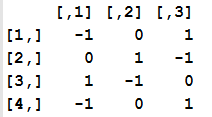
# which function in R for matrix which(m==0,arr.ind=TRUE)
It will return array index of the matrix when m==0 so the output will be
